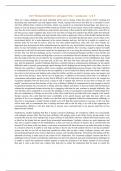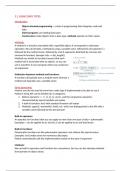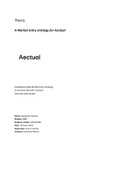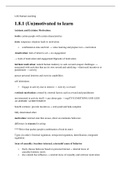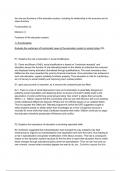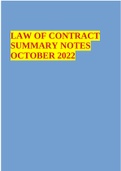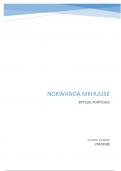Lecture 1 Utopia and foodscapes.......................................................................................1
Lecture 2 The food-health nexus and how policy can help!.................................................3
Lecture 3 Shifting priorities and levels of decision-making in food and agriculture policy....6
Lecture 4 City-region food systems...................................................................................10
Week 2................................................................................................................................. 14
Lecture 5 Diverse economies............................................................................................14
Lecture 6 DEF applied......................................................................................................18
Lecture 7 Binary thinking...................................................................................................22
Lecture 8 Social justice in the food system.......................................................................24
Week 3................................................................................................................................. 28
Lecture 9 Understanding urban food policies....................................................................28
Lecture 10 Guest lecture...................................................................................................32
Lecture 11 Public food procurement.................................................................................32
Lecture 12 Towards an integrated food policy...................................................................38
,Week 1
Lecture 1 Utopia and foodscapes
By the end of this class will be able to answer the questions:
How do these concepts - Utopia, foodscapes, Utopian foodscapes - contribute to thinking
about food systems?
Why Utopia?
We need new stories that go beyond the focus on ends and silver bullets (one big solution
that will save the world). That’s where Utopian thinking comes in. Utopian thinking starts a
dialogue about just food systems, to create new stories and imagine our ideal future. It
challenges the status quo and helps us to move away from dominant food narratives.
Food Utopia: A tool to study food policy
There are three ways in which food utopias are useful for studying food policies:
1. As critique of existing systems and conventional narratives
- Productive critique: put into question what exists and offers an alternative way
of doing by showing what is wrong with the system (not just being critical, but
productive critique: articulating different ways of doing food)
- Openness to diversity of ideas: not thinking in boundaries of change (e.g.
power, money) or feeling restricted by reality (in the past some things weren’t
realistic either)
2. As engagement with experimentation around the future of the food system
(experiments whereby food is being done differently)
- Move away from expecting things to be in a finished state
- Food worlds are actively in the making (not a single vision, it is always being
re-made by the relations we have with food, people, non-food things and go
on, there is no end; this keeps us open and critical)
3. As a process
- Recognize time and difficulty in changing the status quo (an emphasis on
process recognizes that new ideas and experiments coming from the margins
of society need space to incubate)
- Political project to find new ways to talk about food (gives us a language to
look forward)
In summary
- Tool for: critique, experimentation, process (no end)
- Link critique with solution pathways (being critical to achieve different goals)
- Allows for diversity: not one single way forward
- Explore the limits of what is ‘thinkable’ or ‘realistic’ (no tunnel vision)
- Starts a dialogue about just food systems (what kind of just food systems do we
want?)
Foodscapes
- Conceptual framework
- Perspectives
- Foodscape studies / methods
- Foodscape mapping
- Exploring / analysing
1
, - Imaginary / Utopian
Foodscapes
- To be understood as an assembly there are two components: food & (land)scape
(the view/image and materiality of a scene; what do we see?; spatial and material)
- To be defined as the reciprocal relationship between food provisioning practices
(growing, processing, transporting, purchasing/acquiring) and (land)scape
- In other words: Foodscapes are the (land)scapes created, reproduced or
transformed through food provisioning practices as well as the shaping of food
practices through these (land)scapes.
Foodscapes - disciplines and focus
- Foodscapes research mainly in health-related fields (health promotion, public health,
and nutrition) and geography (cultural geography, physical geography)
- But also in planning, sociology, anthropology, psychology, environmental studies,
and architecture
- Substantial overlap across disciplines: indication of looking at ‘more than food’
- Normative priorities in studying foodscapes: public health, social justice,
environmental sustainability, and community food security
Foodscapes
There are three different perspectives on foodscapes:
1. Health perspective: The primary focus is on the influence of the food environment
on public health and healthy eating (e.g. obesogenic environments, fruit and
vegetable consumption and health inequality). Studies emphasize: (1) importance of
space: how healthful is a food environment?, and (2) food consumption (instead of
production, distribution)
2. Social justice perspective: This perspective explorates the social injustices that
exist in the food system. Spatial and social food inequalities are materialized through
food deserts (= areas with limited availability of and/or access to nutritious and
healthy food). Foodscapes are seen as a lense to investigate (structural) spatial
inequalities in food access.
3. Environmental perspective: Foodscapes as a lens for exploring environmental
sustainability in the food system, that helps us to understand how changing social-
ecological environments are linked to community food resilience. This perspective is
useful for a broad food system perspective; one that is not limited to production or
consumption.
Foodscapes - scale
Foodscapes has been operationalized into numerous spatial spaces:
- Macro view: city region foodscape to global foodscape
- Meso view: neighborhood to city foodscape (our own look at our neighborhood)
- Micro view: institutional or domestic foodscape (do you have a kitchen, what are
your habits)
Foodscapes: summary
- The spatial and material manifestation and shaping of food provisioning practices:
ranging from producing to processing, trading, buying, sharing, cooking and eating
food
- Foodscapes are reciprocally interlinked and nested
2
, Interlinked foodscapes
It refers to how things like production, transporting and retail are interlinked. Different areas
are (globally) interlinked with each other. Each element of a foodscape is related.
Nested foodscapes
It becomes especially visible if you look at the relation between the macro and meso scale.
The consumption of fast food is more promoted when seeing a street full of big chains as
McDonalds and Burger Kings. It will be more difficult to buy fresh food. This is the nested
macro and meso scale. Furthermore, you see the nested foodscapes also when looking at
the meso and micro view. What you eat at the domestic level is partly decided by the micro
view (e.g. having a city garden).
Foodscapes studies
Foodscapes studies can have two different aims:
- Exploring & analysing: foodscape is seen as a tool to describe and understand our
food provisioning environments (observing and analysing) and to assess their
potential impact on food provisioning practices:
- Food mapping (GIS, participatory mapping)
- Bodily cartography
- Consumption surveys (linked to other datasets)
- Food diaries
- Food geographies & biographies
- Multi-sited ethnographies (diving into the everyday life of people that process
and prepare food; more the story behind the foodscape)
- Imagining & transforming: foodscape as a critical transformation framework (looking
at what is exactly wrong with the current system). It focuses on the opportunities to
challenge the existing ways of food production and consumption: aligned with
utopias. It creates different future trajectories: (1) food imaginaries / utopia (by
describing and visualising potential food futures) and (2) spatial design
Lecture 2 The food-health nexus and how policy can help!
We have enough evidence telling us that the current food system is not supporting health -
we must take action to trigger a shift from a system that too often results in harm to a system
based on health promotion.’ - Ruth Richardson, Executive Director of the Global Alliance for
the Future of Food --> Stop looking at the challenges because we already have an
understanding of the problem and enough evidence, we have to look at solutions now. Not
constantly sharing the problem, just start to focus on solutions (therefore, Utopian thinking to
get out of our narrow thinking).
By the end of this class will be able to answer the question:
Why is nexus thinking important for changing our food systems?
What is a nexus?
- Nexus thinking means thinking about and understanding key parts of a system and
their interrelationships.
- Relates to systems approaches (looking at specific relations within the system
approach)
3

